Starting a blog for your business isn’t just a good idea.
It’s a powerful way to connect with your audience and grow your brand.
In fact, companies that blog get 55% more website traffic than those that don’t.
Besides, 57% of businesses have acquired a customer through their blog.
So, by blogging, you have more chances of attracting your target customers.
Not just those in your country (like Kenya) but from all over the world.
It also helps you establish authority and acquire backlinks.
Unfortunately, not all blogs receive substantial traffic from Google – if any at all.
A recent study by Ahrefs shows that 96.55% of web pages on Google get 0 visits.
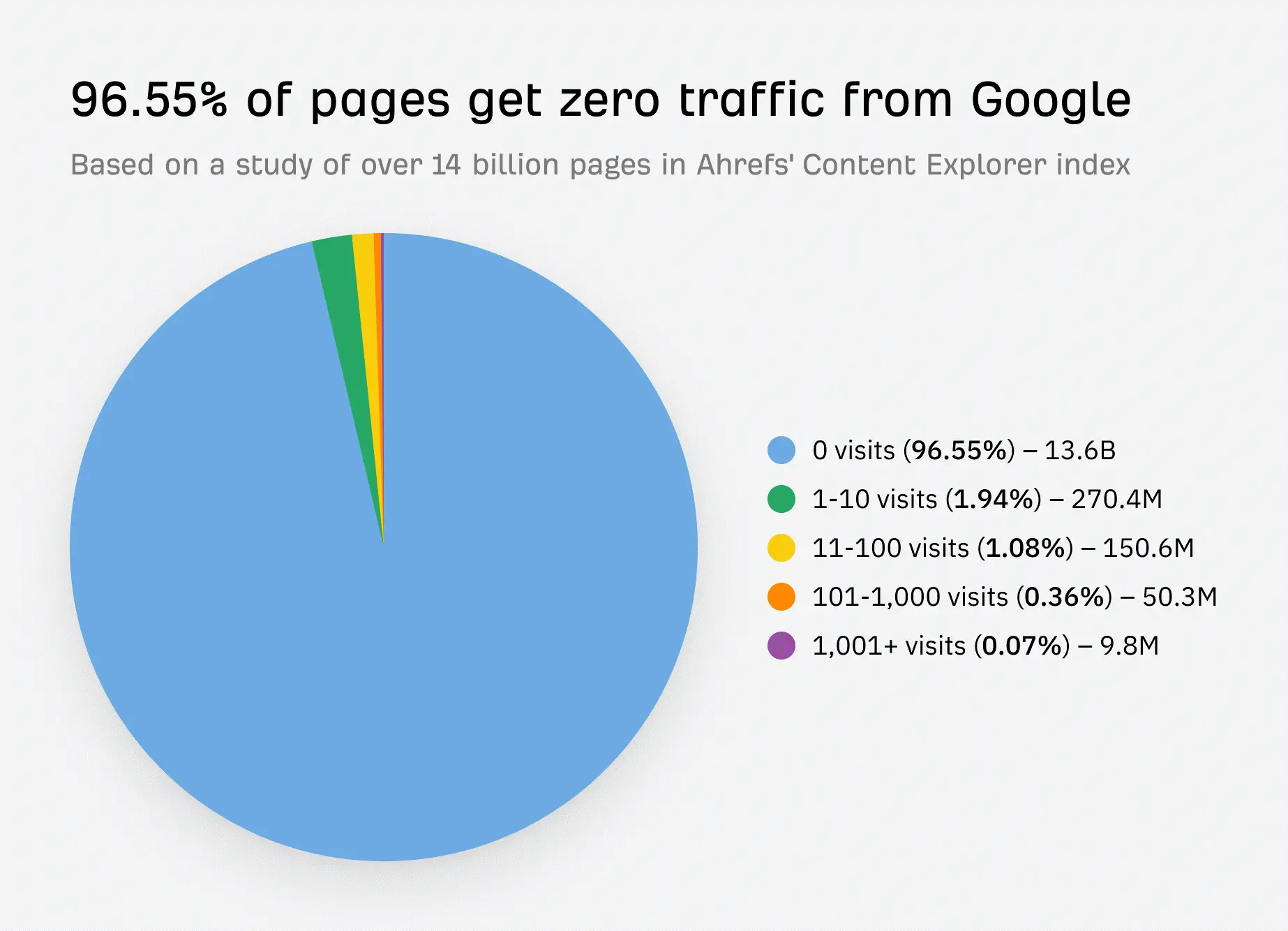
So, how do you ensure your web pages are among the 3.45% that get search traffic?
Or even make it to the top 0.07% and get 1001+ visits?
We’ll uncover this (and more) in this step-by-step guide.
I’ll also share mistakes I made while starting my blogging journey (and their effects).
And how to make data-driven decisions to avoid making the same mistakes.
Incorporating the tips and best practices herein will help you build a profitable blog.
Let’s dive in.
How to Start a Business Blog in 7 Steps
Before I show you how to start a blog, I have to insist on two things.
First, know your ultimate goal – the key reason you’re creating one in the first place.
Generally, your goals may fall under any of these three categories:
#1: Blogging as a hobby or to share your journey, experiences, or book summaries.
#2: Blogging for money – monetize traffic through display ads or affiliate marketing.
#3: Blogging for business – drive target customers to your website and increase sales.
This guide is intended for the latter.
Those who want to convert a blog into a lead-generating machine.
The other thing is that for better results, you must be consistent.
Not just in terms of the content you’ll be creating but also the mentors you choose.
In his book, The Psychology of Money, Morgan Housel says:
“Being swayed by people playing a different game can also throw off how you think you’re supposed to spend your money.”
Similarly, if you’re blogging for business, getting influenced by those blogging for money (focusing on driving traffic as the most important goal) is a wrong idea.
Don’t get me wrong. Some insights may still be applicable in both instances.
But others, like the emphasis on attracting visitors that align with your business, differ.
Know your ultimate goal, then find mentors (a few) whose context aligns with yours.
Now you’re ready to build a competitive blog.
1. Find and Study your Niche
One of the biggest mistakes in marketing is trying to appeal to everyone.
It’s a sure way to spend more and get a low return on marketing investment (ROMI).
So, you have to be specific about the audience you’re targeting.
It’s called a niche – a specific, well-defined segment of a broad market for your products or services.
The members of each segment have unique needs, interests, and behaviors.
Do preliminary research to understand the problems they’re experiencing.
And then focus on offering solutions to their problems through your blogs or products.
According to Chris Brogan, a New York best-selling author, you should never write your website content around “how great you are” but “what problem you solve.”
He says it’s one of the surest ways to ensure your website does not bring in customers.
Does it mean you can not target a different segment?
No!
But you should create unique content and marketing messages for each of the segments.
Of course, some other articles will be for different purposes like link building.
But don’t deviate too much – or don’t deviate at all!
Here are the 6 essential elements of a good niche:
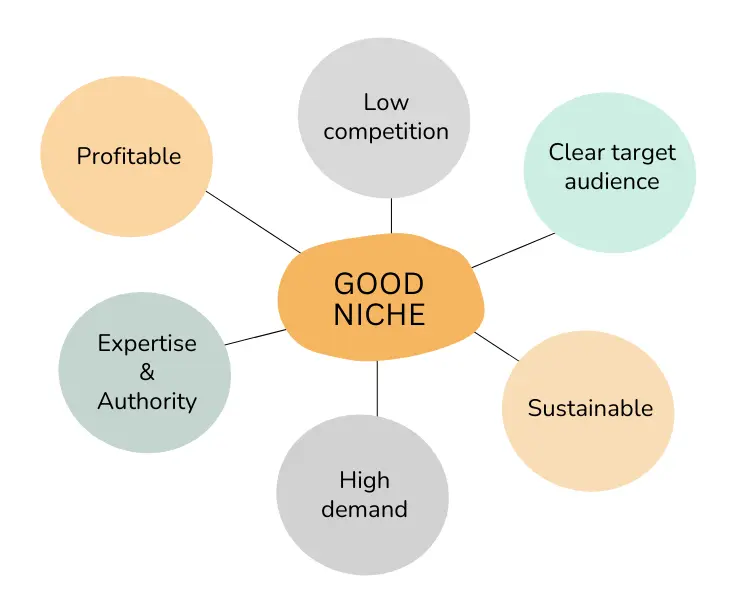
Niching down helps you offer tailored solutions or products to a defined audience.
It increases your competitiveness and lead to higher customer engagement and loyalty.
So, conduct market research and find a suitable niche for you.
Then after knowing your industry and segment, come up with a brand name.
2. Buy Domain and Web Hosting
Factoring in the niche you have chosen, find a suitable domain name.
You’d want to ensure the domain you’re choosing is available.
Try and keep it not more than 10 characters or two words to make it more memorable.
And confirm the availability of social media usernames.
Let’s say you want to create an SEO-focused blog targeting Kenyan businesses.
Your goal being to attract an audience to sell SEO services.
You may consider a brand name like ‘seokenya.’
According to Namecheck, the domain seokenya.com is already taken.
But you can opt for other extensions like .org, .co, .us, or .co.uk.
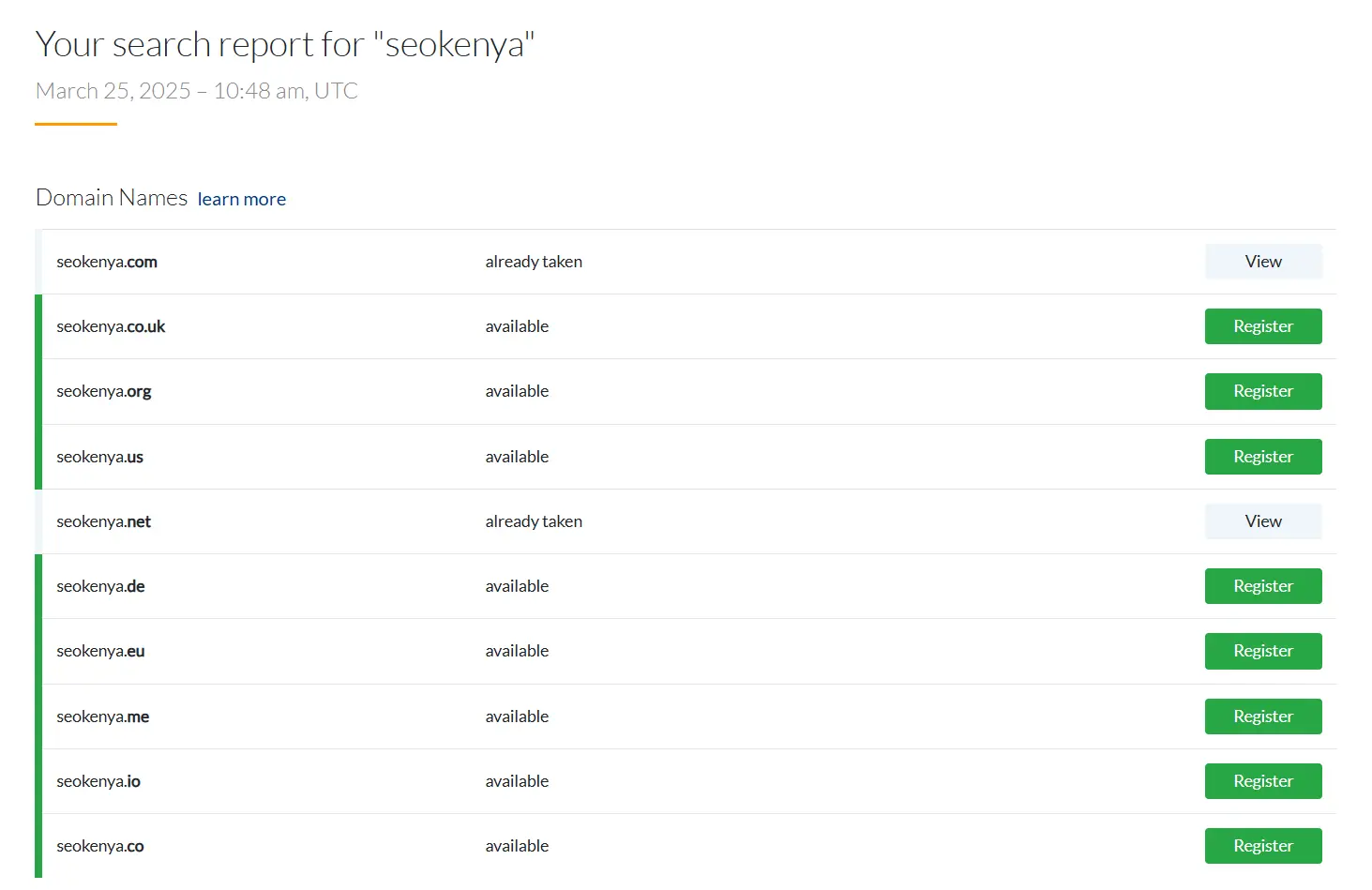
Namecheck also shows you whether social media usernames are available:
In our case, the seokenya username is taken across all social media platforms.
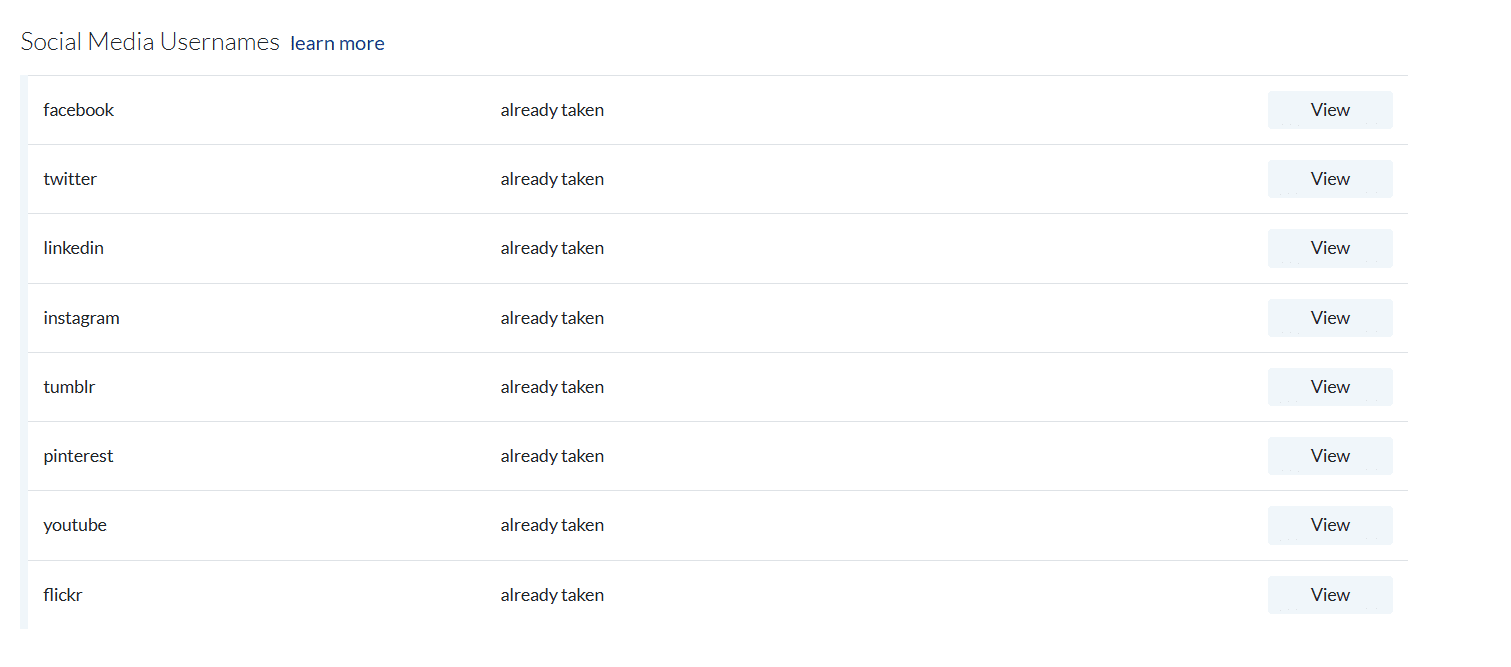
So you’d want to find one that you can match your domain and social profiles.
Use other domain registers to find your preferred domain name.
Also, try country-specific extensions like .co.ke, and then purchase it.
You can check companies like Hostinger, Dreamhost, and Namecheap.
I have personally bought a domain from them.
A quick search on Hostinger shows us that the domain proseokenya.com is available.

Please note that you’ll need to renew your domain monthly to keep it.
One more thing – after buying a domain, you need hosting to launch your website.
Web Hosting is the process of renting or buying space to house a site on the World Wide Web.
My current hosting (Hostinger) has affordable packages for as low as $2.99 per month.
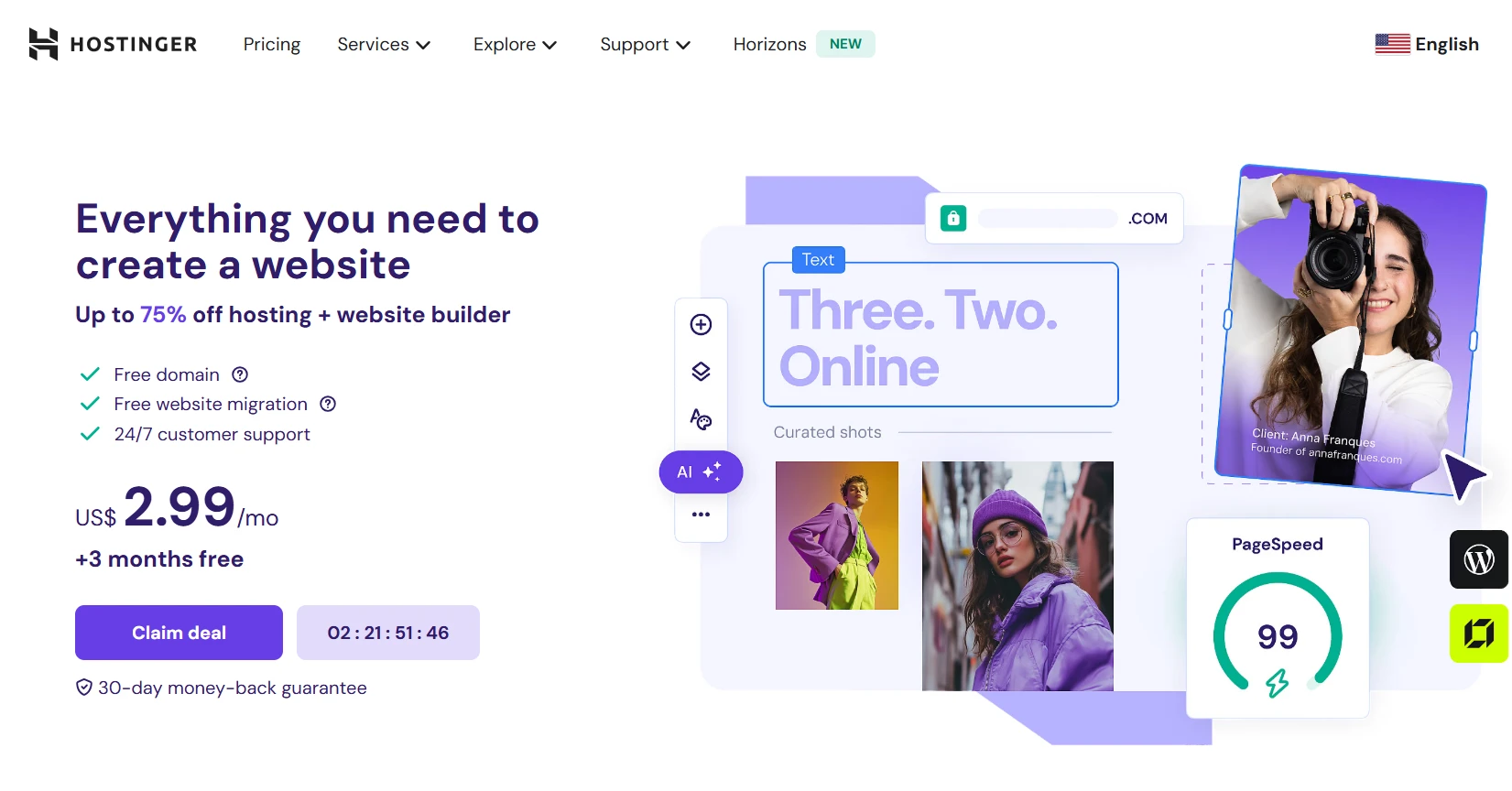
Find a reliable web hosting company and check their reviews online.
Or let a web designer in your region give you recommendations.
Either way, do background check, especially on the availability of support and uptime.
Also check the renewal costs if price is indeed your primary determining factor.
Then after buying domain and hosting, start designing your website.
3. Start Designing your Blog
You have options when it comes to building a blog or website.
You can learn coding (for instance on YouTube) and create a site on your own.
Or hire a professional web design company to do the work for you.
You can also create your first blog by installing WordPress.
And guess what?
As of 2024, over 810 million wesites (from 455 million in 2021) used WordPress.
This number continues to grow daily.
And most hosting packages have preinstalled WordPress for you.
So, all you have to do is activate it and start building your site.
But first, you’ll need to find a theme that meets your website’s requirements.
As of today, there are 7349 WordPress themes you can choose from.
You can filter themes according to categories like blog, education, or e-commerce.
For instance, there are 828 e-commerce related themes (as of today).
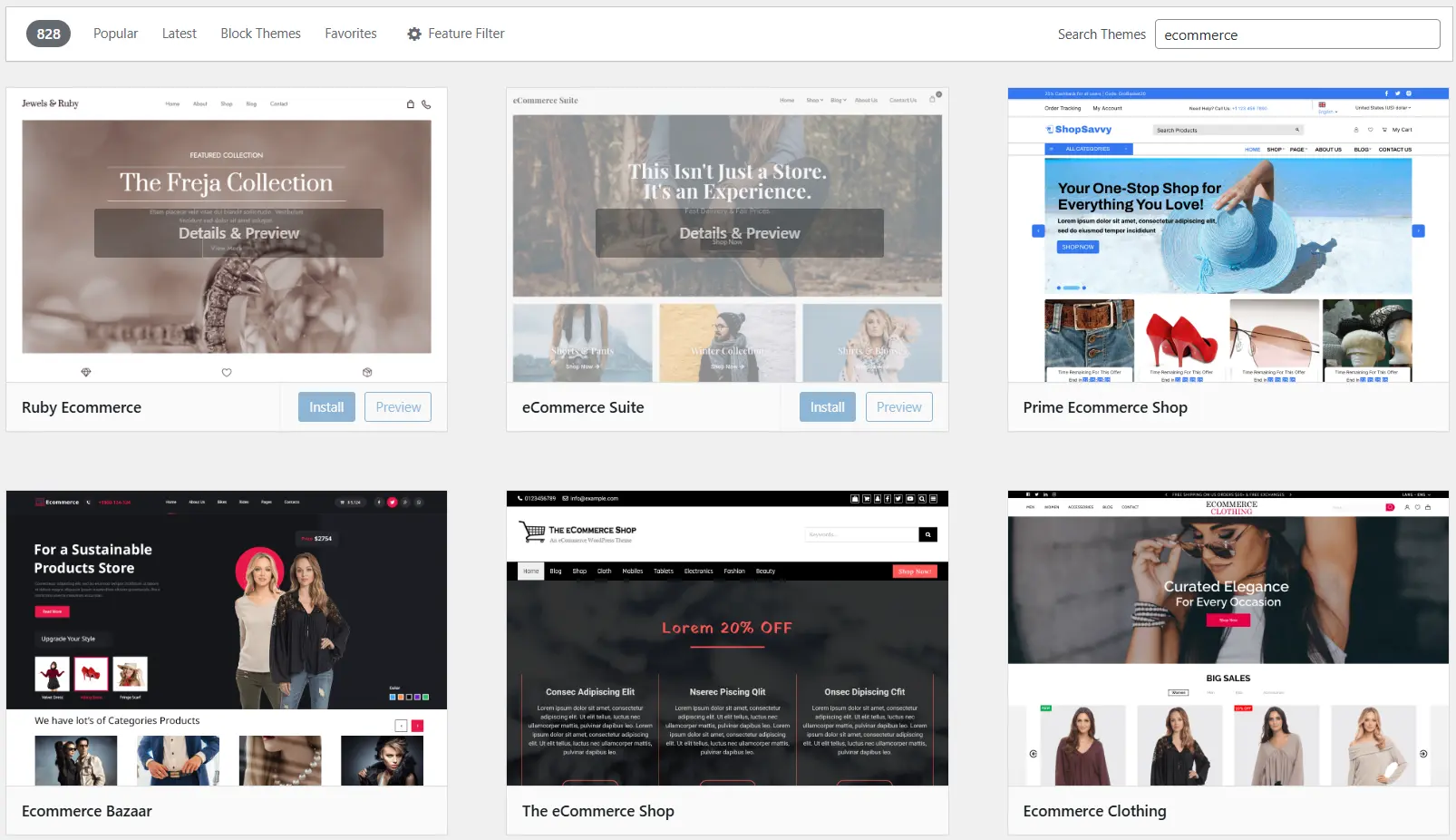
After choosing and activating a theme, create pages like Home, About, and Contact.
You can use WordPress default editor.
Or install a page builder like Elementor to create your landing pages from scratch.
Just don’t overcomplicate the design and focus on what matters the most – content.
As for the design or theme, you can always make some changes or hire someone later.
Add more content by creating quality blogs that align with your business.
This is a fundamental process that actually deserves its own section.
4. Find Relevant, Low Competition Content Ideas
The problem
I started my first blog on the wrong foot.
My biggest mistake?
Not targeting a specific audience and not having a content marketing strategy.
But you know what mistake was even bigger?
Focusing on monthly search volume as the only determinant of a ‘great’ content idea.
In fact, 28 of the first 44 articles I initially published targeted these keywords:
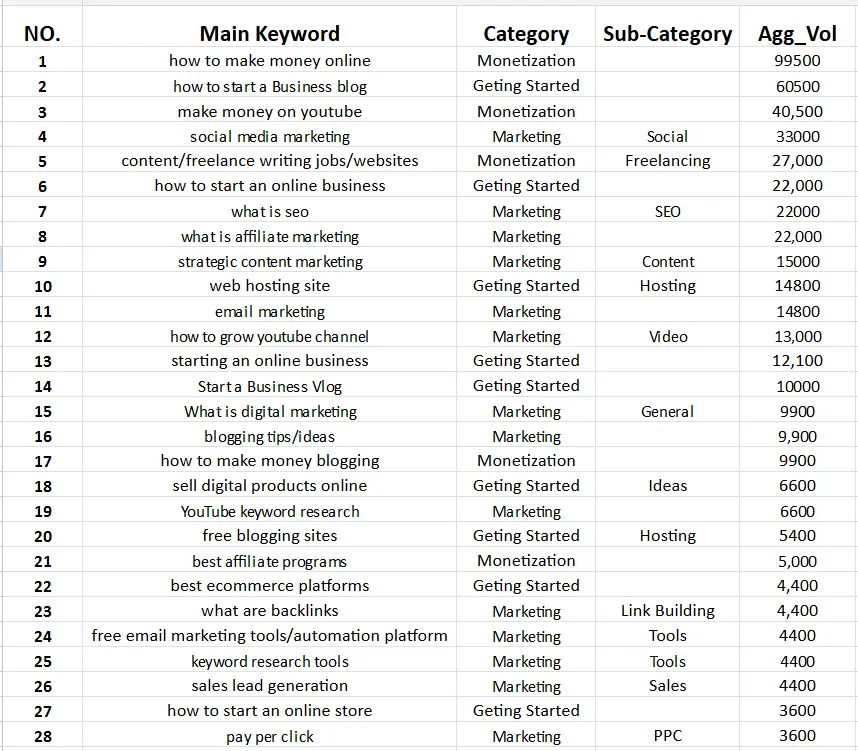
What I hadn’t realized was that these keywords were too competitive for a new website to rank.
Take the content idea, “what is SEO,” for example.
According to Ubsersuggest, the #1 ranking page for the keyword is Search Engine Land (with a domain authority of 90% and 13k+ unique backlinks pointing to it).
#2 is Google. You heard that right (with a DA of 95 and 11k+ unique backlinks).
Not to mention the video from Ahrefs, a known global educator for SEO.
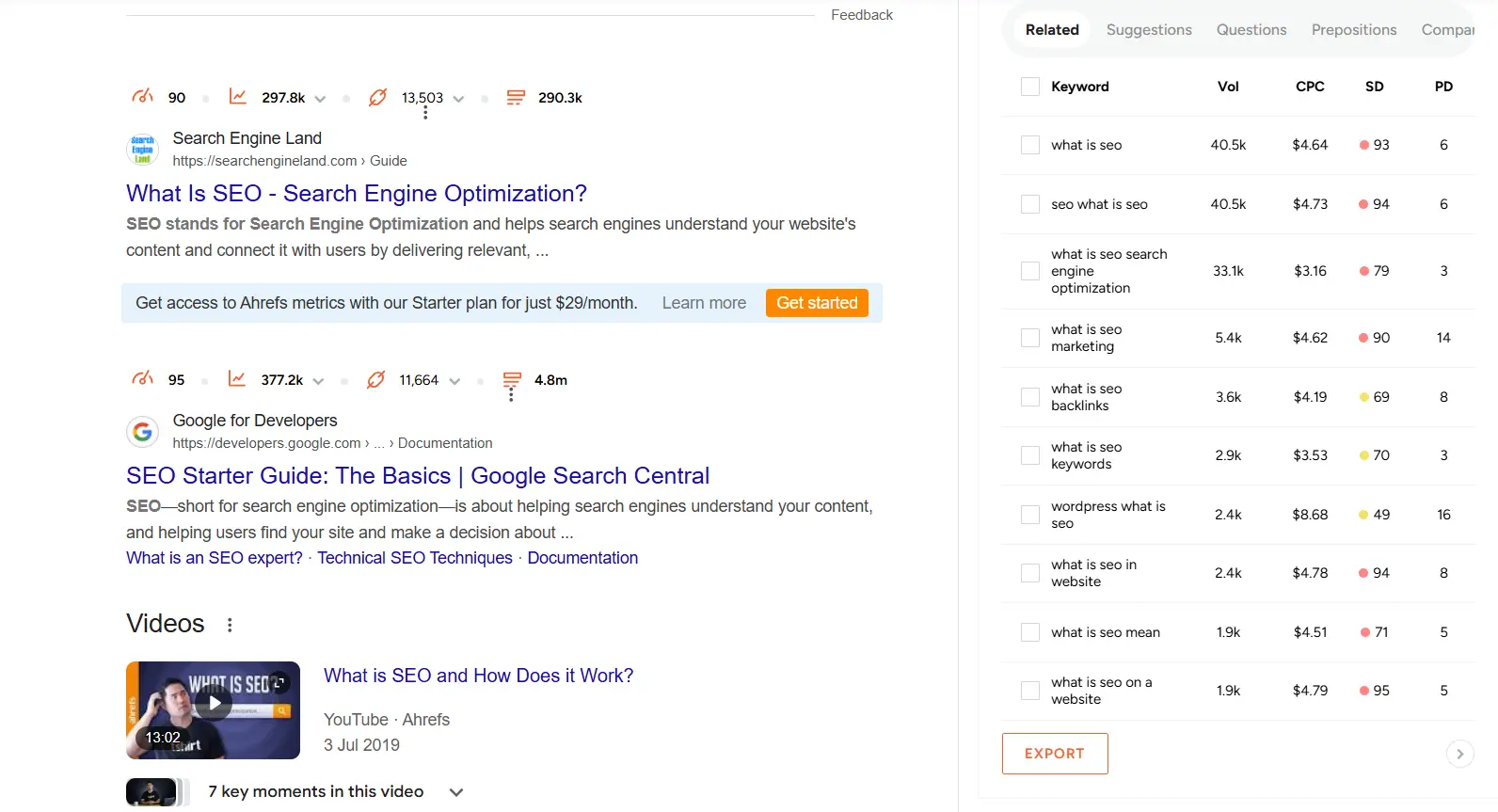
And this is not the only competitive keyword I initially targeted.
I also wrote a 2300-word guide about ‘pay per click.’
My article was competing for Google’s top 10 pages with giants like Search Engine Land, WordStream, and Wikipedia, with tons of backlinks and authority.
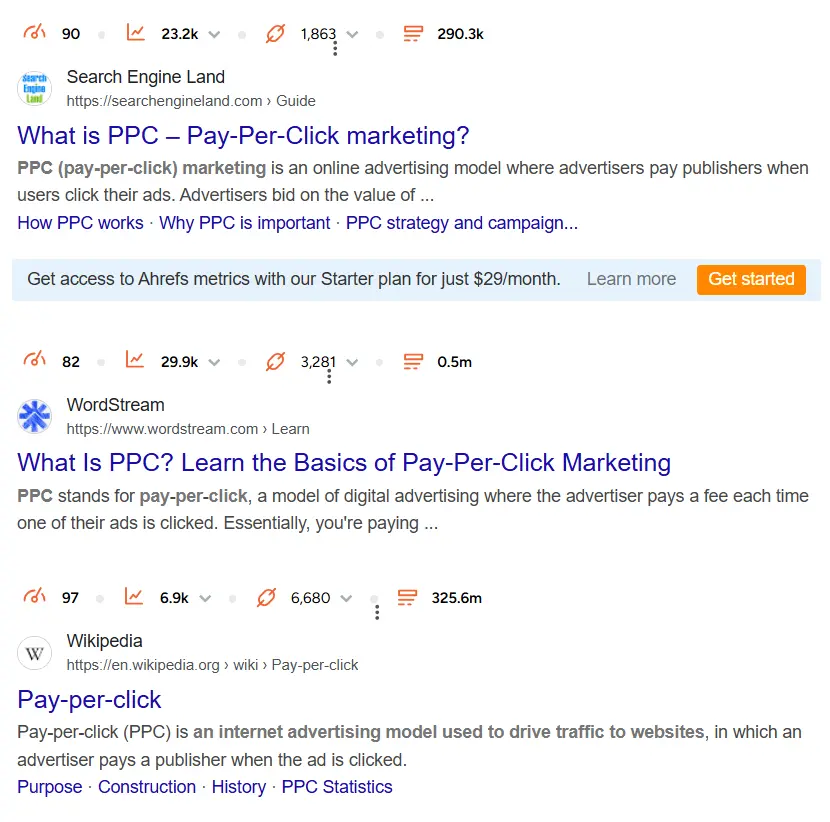
And so on.
The results?
My blogs (44 of them) fell under the 96.55% of the pages that don’t get any traffic.
Yet I had spend at least 10 hours to write each one of them.
There’s a better way to spend 440 hours than writing content that goes unread.
And I have not even counted the hours I spent updating the content and so on.
So, what would I have done better?
Well, I had two options:
Target less competitive keywords I could rank for even with a few backlinks.
Or
Target these competitive keywords but then create a substantial amount of backlinks.
If you were in my shoes, which one would you have chosen?
If I could go back to 2020, I would redo my keyword research.
This time, I would be careful not to compete with the big brands – at least not when starting.
Instead, I would leverage low-competitive keywords by adopting local SEO.
Don’t repeat my mistakes – do this instead.
The Solution (for you)
Let’s say you’re creating content for a travel agency in Kenya.
One of the ways you can find low-competitive content ideas is through local SEO.
For instance, the keyword ‘travel agency’ can be too competitive for a new blog.
How about you narrow it down to ‘travel agency in Kenya’?
You can see that the top-ranking page, with only a DA of 17 and 226 unique backlinks, gets at least 3000 monthly visitors (from Kenya alone).
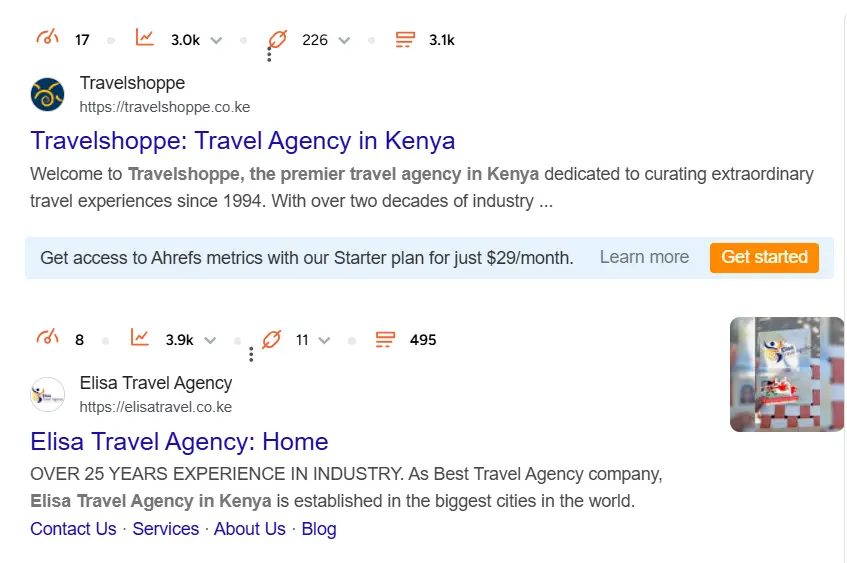
#2 is a page that even has much fewer SEO metrics – DA of 8, 11 unique backlinks.
Yet it gets over 3.9k monthly visitors from Google searches.
Compare this with the non-localized keywords above.
Then tell me which would be much better to target, especially when you’re starting.
That’s why local SEO optimization is so important for small businesses.
It can help your business rank higher on search engines and reach your target clients.
Bottom line?
Use keyword research tools like Ahrefs, Ubersuggest, SEMrush and Google.
Find low-competitive keywords and leverage local SEO where relevant.
A good keyword should have search demand, business value and low competition.
Later, when your website has gained authority, you can go head-on with the ‘big brands.’
You’ll have become one already (if you have worked for it).
But remember not to over-emphasise on search volume of a single keyword.
The Search Engine Land’s ‘what is seo’ article I mentioned earlier ranks for over 16k keywords.
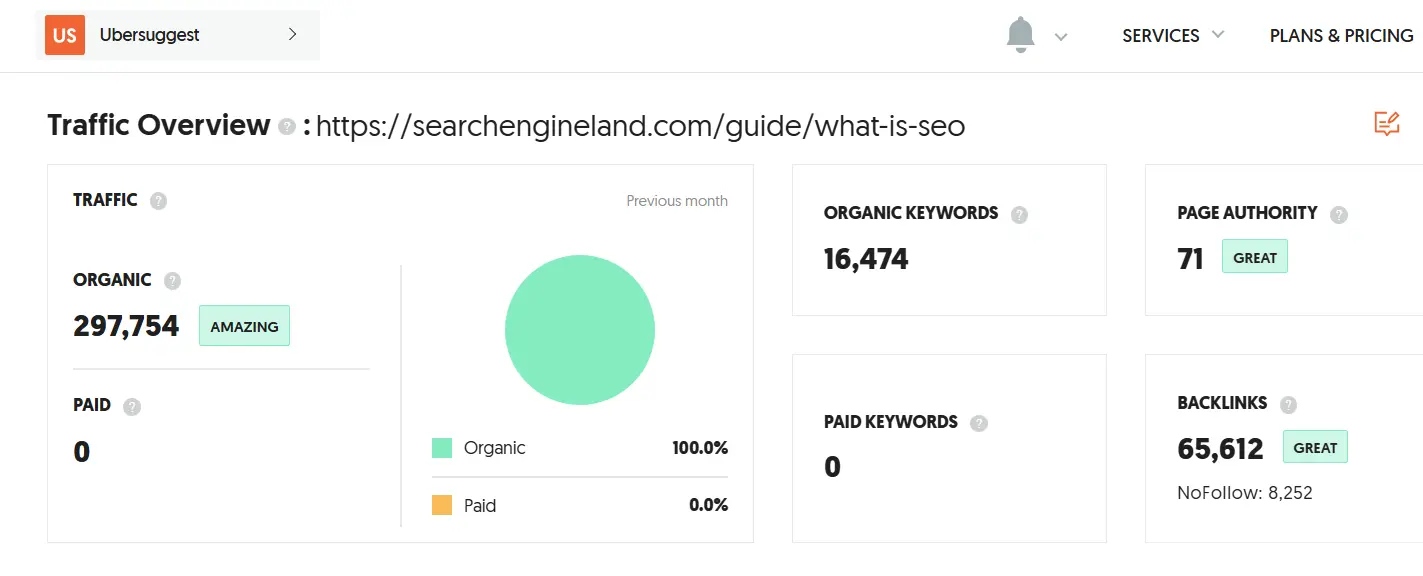
Does it mean the page has over 16k exact match keywords? Of course not.
I discourage you from repeating your target keyword countless times, trying to rank.
It’s a bad practice called keyword stuffing aimed at manipulating the search engines.
Yet, it ends up pissing of your readers as well.
Instead, optimize your content for search intent – the reason behind a search query.
More of this in the next step.
However, finding low-competitive keywords is just a drop in the ocean.
You have to create quality content that will help you get clients and earn backlinks.
Here’s what you need to do.
5. Write High-Quality, Search-intent Optimised Content
What exactly high-quality content is is a highly debated topic in digital marketing.
Basically, it means content that is useful, reliable and relevant to your target audience.
It helps you achieve your marketing goals.
Whether it is driving traffic, converting leads or building authority.
You see why we started by identifying our target audience (customers), right?
While blogging for business, you should focus on your target customers’ pain points.
Put more focus on meeting the search intent than overoptimising your keywords.
There is no point in mentioning your keywords in every heading.
Or after every few sentences.
Ask yourself, what type of content the person searching for the keyword is looking for.
For instance, let’s say you’re writing an article on the ‘best SEO companies in USA.’
You don’t have to think what the search intent is.
What I mean is that Google has already done the hard work for you.
Based on how users interact with the search results, Google already understands that a person typing this keyword expects a list of SEO companies in the US.
That’s why the top 2 pages are list articles:
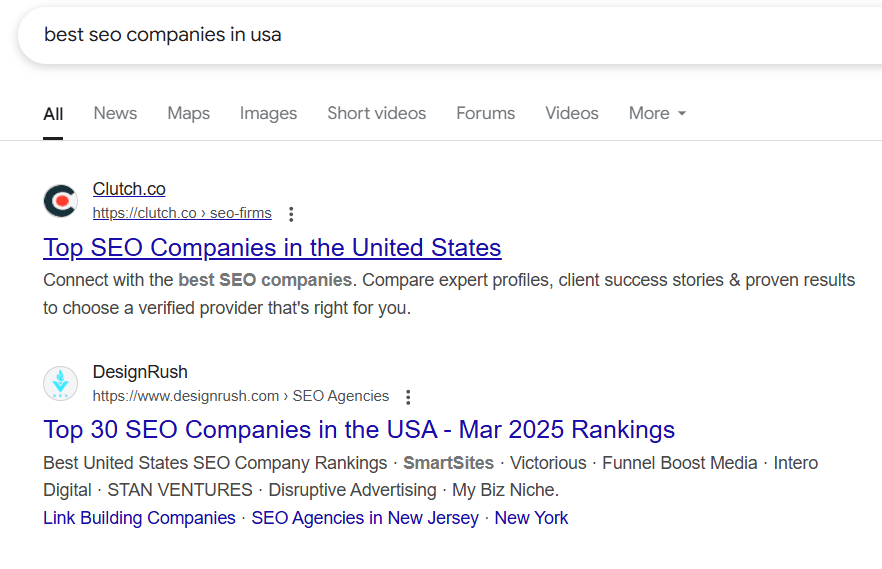
And so is #3-10
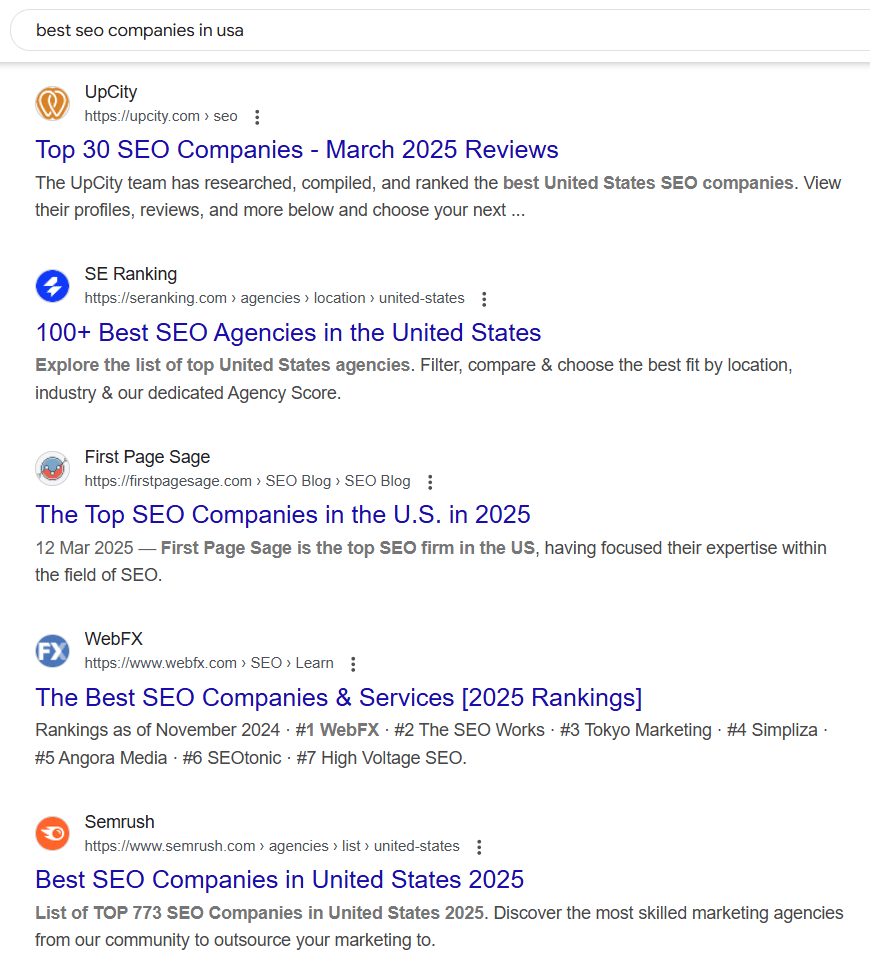
So, this query is not suitable if you want to write a detailed review of one company.
In this case, you may want to use ‘SEO company in USA’ instead.
Google knows someone typing this query is looking for one company and not a list.
And you know the search engine focuses on giving people exactly what they want.
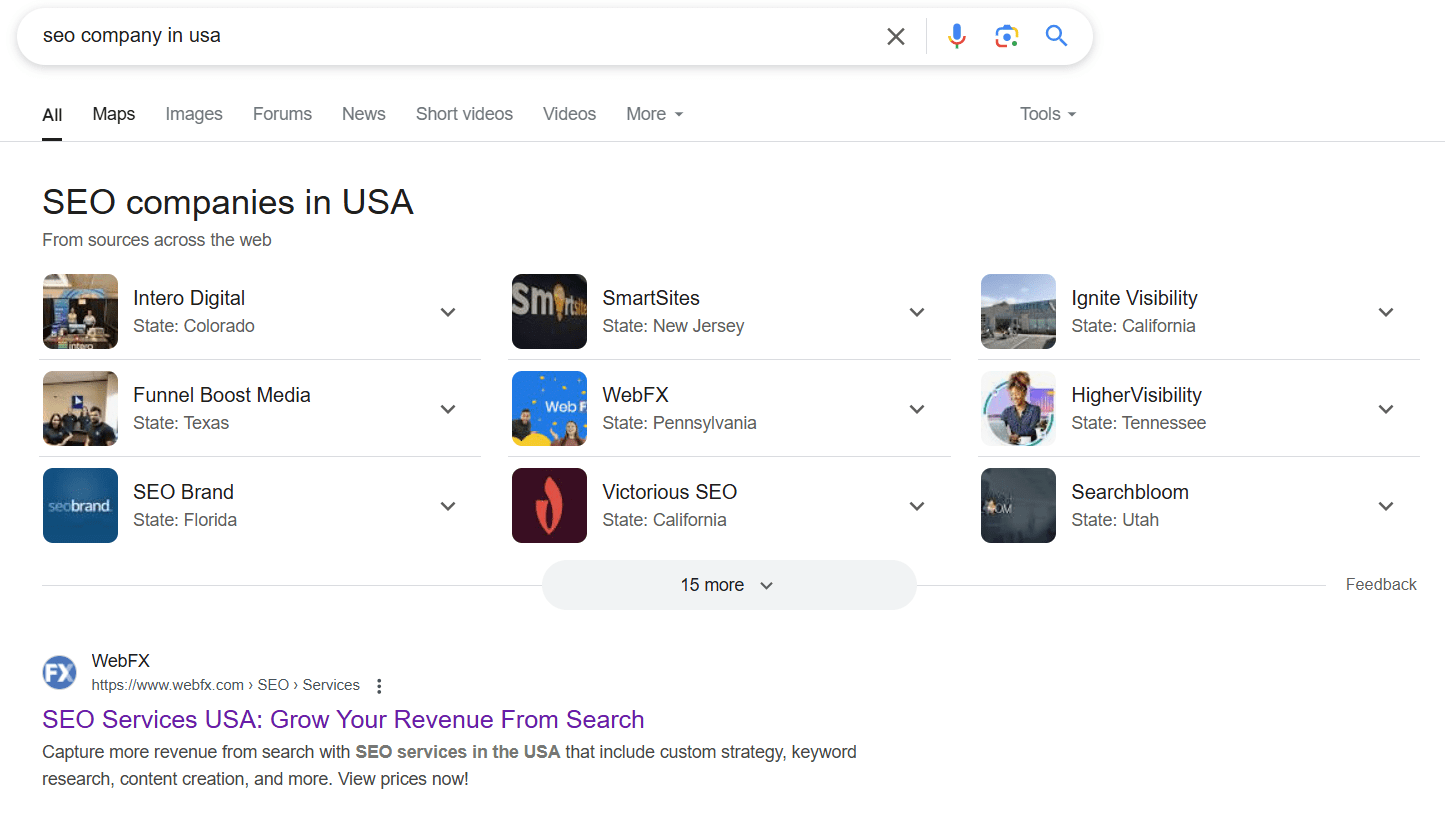
Now you understand how to assess the search intent for a keyword, right?
Before writing any content on your website, do this small exercise.
Put the target keyword on Google and see the top 10 ranking pages.
Review the results to understand what users want.
And align your content to their needs.
Remember, you’re writing content for people – whose behaviors and interactions with it tells algorithms where to position your content – not vice versa.
While writing your blogs, follow the best practices.
For instance, write in a conversational tone, short sentences and paragraphs.
And include visual aids like videos and images.
I prefer writing 2 sentences per paragraph – to make my blog readable and organized.
But this is a personal preference. Find what works for you.
It is also better to divide your content into subheadings (H2, H3, H4…) to help your readers find information easily.
And also make your content skimmable.
This also helps search engines understand your articles better.
Overall, good content is relevant to your audience and meets their intent.
And one more thing, focus on quality over quantity.
There is no optimal number of blogs you should write, and how often you should do it.
Just give your audience what matters the most – solutions to their problem(s).
But remember, no matter how good your articles are, you have to promote them online.
6. Promote your articles online
Starting a blog and writing a few articles for your business isn’t enough.
You will rarely get traffic to your website if you don’t promote your content online.
Don’t practice what is now commonly referred to as the ‘publish and pray’ approach.
It means you publish content and wait for your viewers to see it.
That’s another major reason why my blogs never got read in the first place.
Start by sharing your content on social media platforms.
But don’t be basic. Do not just paste the links and wait for the people to click.
Repurpose your articles into videos and share them across platforms like YouTube.
Convert others to image carousels or short videos for Instagram, TikTok and YouTube.
This helps you reach your audience across the web and drive them to your site.
Take time to monitor which platforms are bringing in more customers for your business.
Remember, your goal is not just to bring anyone to your website.
But to ensure you bring in people who qualify as your target customers.
Another approach is to share another version of your blogs on Q&A platforms.
You can try out Quora or Reddit and other relevant discussion forums.
Again, don’t paste the entire content over there or the links – if they allow it.
Share your thoughts and answer questions, and then organically share the link.
Give people the reasons to want to click your link by being authoritative.
And you never know; some of your audience might discover your content and link to it.
Which brings me to the next point.
Build quality backlinks for your blog articles.
You can email those who have mentioned your topic to link to your content.
Of course, you don’t want to beg for links. Or even worse, buy them.
In fact, I once bought some backlinks on Fiverr.
Let’s just say I wasted my USD 40 because what I only got were spam links.
Don’t approach link building the wrong way, as I did.
Instead, create linkable content.
Some type of content tends to attract more backlinks than others.
A survey involving 628 SEO experts explored the suitable content for link building.
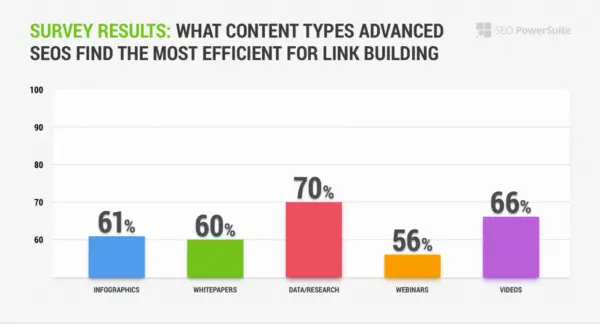
For instance, you can create data/studies in your niche and outreach to get backlinks.
Another way to get backlinks is through guest posting.
Find relevant sites where you can contribute articles and write quality blogs for them.
Keep promoting your articles, and eventually, they will rank higher on search engines.
And most importantly, acquire more clients for your business.
But don’t forget to monitor performance and updating your content regularly.
7. Monitor performance and optimize for conversions
Blogging is a never-ending practice.
You have to keep monitoring how your content is performing on search results.
A good place to start is the Google Search Console.
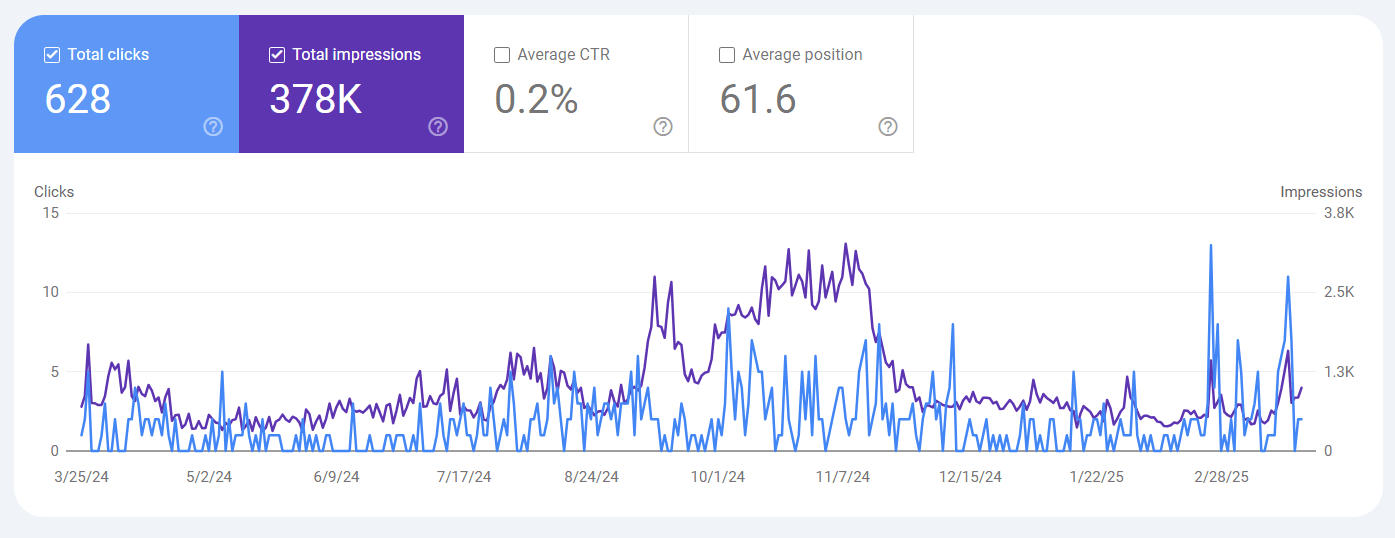
Pay attention to queries driving impressions and clicks to your pages.
Then, update your content to reflect the most relevant queries.
Just don’t over-optimize.
And then monitor how efforts like content updates impact your website performance.
But Search Console only tells you how your site is performing on search results.
Use other tools like Google Analytics and Ahrefs to monitor other traffic sources.
This includes traffic from social media and referrals (from other websites).
Then, find other less competitive content ideas to target for your next blog.
You also want to pay attention to the number of leads you’re getting from your blogs.
And the number of sales you’re generating from these leads.
This way, you can know what is working best for you and maximize it.
This is an important concept I wish I had known when starting my blogging journey.
Always monitor what works for you and maximize it.
So, be open to experimenting rather than consuming information as it is.
But remember not to overthink and just get started – if you haven’t already.
Then, focus on improving and getting better at blogging as time goes on.
Summary
I’m glad you made it this far.
Do you now understand the step-by-step process of starting a blog?
The key takeaway from this article is:
- Research and identify your audience before blogging
- Find low-competition, high-value content ideas with search demand.
- Understand the search intent of a keyword before you start writing
- Write search-intent optimized articles that solve your audience’s problems
- Build backlinks for your blogs and share them on social media
- Keep monitoring and improving your content.
Note: Google assesses web content credibility and quality using the E-E-A-T.
It focuses on Experience, Expertise, Authoritativeness, and Trustworthiness.
These are qualities I want you to chase – not publishing x number of articles every day.
Remember, you want your content to be among the 3.45% that get traffic from Google.
Build your first blog or write your first article now.
In case you get stuck along the way, we’re an email away from helping you.
Or check how our SEO solutions can help your business generate more sales.

